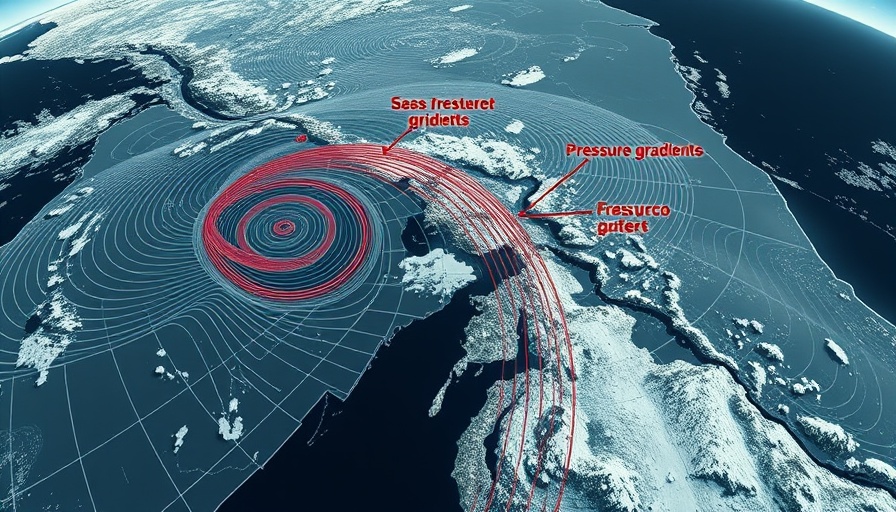
Understanding the Alaska Cut Off Low: A Weather Phenomenon
For residents of the high desert, keeping an eye on the weather patterns along the West Coast can provide valuable insights into local conditions. Recently, meteorologists have observed a significant weather event known as the Alaska Cut Off Low, located in the Gulf of Alaska. This phenomenon greatly influences atmospheric conditions all the way down to the San Francisco Bay Area, impacting temperatures, wind patterns, and fog.
How the Cut Off Low Affects San Francisco's Weather
The Cut Off Low acts like a weather anchor, with its effects radiating outward. As breezes from the North Pacific High strengthen, they push surface northwest winds that usually dominate in the afternoons. This evening pattern leads to the infamous fog that San Francisco is known for, creating a juxtaposition of mild temperatures and high humidity, especially in coastal areas.
Shifting Winds: Mornings versus Afternoons
In the morning, southerly winds sweep from Half Moon Bay to Stinson Beach, but by afternoon, these winds transform into westerlies as the eddy fades away. This shift not only alters local temperatures but also affects the robustness of the winds felt in different areas, including Napa and the Stockton region. By understanding these wind dynamics, residents can better prepare for their day and plan outdoor activities.
The Fog's Role in Temperatures and Winds
Fog is more than just a scenic backdrop; it plays a crucial role in controlling temperature variances. Below the fog bank, temperatures tend to be cooler, impacting everything from agriculture to outdoor leisure plans. Understanding this correlation helps residents strategize daily activities, especially those who rely on specific weather conditions for farming or recreational endeavors.
Future Weather Predictions and Climate Awareness
As climate change continues to challenge conventional weather patterns, events like the Alaska Cut Off Low partly reflect shifts in how atmospheric systems operate. The increased frequency of these weather anomalies prompts us to stay vigilant and educated about changing climate dynamics. Local community members can engage more profoundly with climate education initiatives or participate in discussions on sustainable practices to combat these shifts.
Creating Community Resilience Through Knowledge
The implications of the Cut Off Low stretch beyond just thermometers and anemometers—they reflect on our local lifestyle and community well-being. Embracing initiatives that promote knowledge about climate impacts fosters resilience. As individuals become informed, they pave the way for collective action toward better climate practices that can positively affect health, environment, and our cherished high desert culture.
As we engage with our surroundings, we find that understanding how weather events shape our environment can lead to proactive decisions—whether it’s for home gardening, attending local events, or simply enjoying outdoor spaces.
 Add Row
Add Row  Add
Add 




Write A Comment